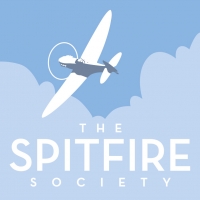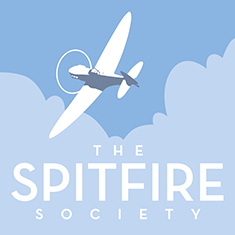
Aviation Photography: How To Capture Spitfires In Motion
Aviation Photography: How To Capture Spitfires In Motion
Capturing any fast-moving subject on camera can be challenging. Unsurprisingly, photographing a high-speed spitfire in a flypast requires a little extra focus. On the ground at an airshow there might only be a split second to shoot a spitfire trailblazing through the sky. And, although it’s not a straightforward process, when that opportune moment arises to photograph aircraft in motion you’ll want to be certain your camera shot counts.
Aviation photography means taking some of the fastest motion shots possible. Jet planes and spitfires fly at breathtaking speeds of 200 miles per hour and beyond. The Supermarine Spitfire (perhaps the most iconic British warplane in history), reached incredible speeds of 360 miles per hour. Therefore, you not only need to consider the size and speed of a spitfire, but what camera to have and how to use any speed-motion photography equipment.
We have put together some helpful photography tips to ensure that you can capture amazing aircraft in all their fast and furious glory.
Use aperture to put a spitfire in focus
When capturing any aircraft it’s important to ensure that they remain the focal point of your images. The background, spectators and the weather all play a role in the overall composition of the photograph but they are all secondary to the spitfire or aeroplane in question.
The aperture setting is concerned with the depth of field and it’s the function on your camera that creates a blur. In an ideal scenario, you will have a shallow depth of field to create a laser focus on the subject of your picture. However, aircraft in motion won’t slow themselves down to pose for a photo so a wider setting may be beneficial! Instead, they will fly past you in the blink of an eye so it’s important to play around with your settings and practise taking pictures of other fast-moving objects (preferably in the sky!) to get your eye in for when the spitfire appears.
A shallow depth of field creates the best images to make moving objects stand out but it’s tricky to master in-motion shots. Shooting f/2.8 is a great starting point and you can adjust accordingly as you start taking pictures. The more you take and experiment with different aperture settings, the better you will become.
Learn lessons from other forms of photography
There is no denying that spitfires can really shift through the gears. And, from a photographer’s perspective, it makes sense that you can go from having the perfect shot lined up to missing it completely in a matter of seconds.
Using proven principles for photographing aircraft, for example, one of the most important lessons is to ensure you take up the ideal position from the get-go. Hand-holding your camera is another useful tip as a tripod is going to be a hindrance in this situation. While it may be difficult on your arms, having more agility without a tripod ensures that you don’t move too slowly or miss a great shot because it’s not within your panning range.
That mobility also means you can avoid standing in the same spot for the duration of an airshow. Shooting in more frames per second is a final great piece of advice from high-speed photography as the more frames you can capture in a second, the better the chances are of snapping something good.
Do your homework on the location
If you are taking high-speed aviation photographs it’s important to understand that just turning up and shooting may not yield the best image results. It is a worthwhile exercise to study the layout of the airfield or aviation event in question for a greater understanding of how the flypast or airshow might unfold.
Of course, how far away or low the spitfires fly is an important point to consider but many aviation shows vary, with unique events and interesting shots to take throughout. That memorable photo doesn’t occur too often so you may find you have more success in other parts of the airfield - perhaps there is a museum nearby or some stationary aircraft to capture too. Fine-tune your camera settings to ensure you find those compelling moments that others may overlook.
Now, you can’t predict the future but as well as finding your own way around an airshow or event, speak to locals and organisers to find out as much as you can about the event and what you might expect to see flying by. They will know the timings, which parts of the airshow might provide the best photo opportunities and so forth. People in the crowd might also share additional tips and insider knowledge that, combined with your intuition, will lead to a memorable photo and a spitfire image worthy of a gallery collection.
Use the viewfinder
Modern cameras use plenty of technology to make taking pictures easier but when it comes to high-speed photography, it’s better to use your eye. Relying on the LCD screen to frame your shots is restrictive, and when a spitfire or aeroplane is on the move it becomes even trickier. Instead, use your camera’s viewfinder rather than the ‘live view’ for better control and the ability to respond to the aircraft’s movements.
Choosing shutter speeds
There are few greater sights than a spitfire at full speed. With such historic value and splendour, it’s clear to see why so many aviation fans, professional media crew and fellow photographers will want to capture these incredible jet planes in motion. Faster shutter speeds are one of the camera settings to use to make it easier for your pictures to do justice to a spitfire at full throttle and capture those fast-moving moments. Bird photography, similarly, requires a fast shutter speed due to rapid movements as it freezes movement.
But, on the other hand, a slower shutter speed and some camera panning can help to show motion in the frame which is important for action shots. Once again it’s a case of practice making perfect but choosing shutter speed also comes down to personal preference as well as skill.
Image stabilisation
If you choose to take your motion pictures with the camera in your hand then an important setting to get acquainted with is image stabilisation. This is a useful tool to reduce blurry images caused by camera shake. While a blurry background is great for creating a sense of motion in your images, a blurry foreground to go with just makes for one big blurry shot.
The image stabilisation is perfect for action shots but it also helps make great images when shooting with slow shutter speeds and low light settings. However, bear in mind that using this setting will drain your battery faster so use it wisely or pack some extra gear to accommodate if you will be shooting all day.
Have fun when photographing spitfires
The chances are that you are taking photographs of spitfires because you want to combine your passion for photography with your enthusiasm for such vintage aircraft. For that reason, the most important aspect of photographing your subject is to enjoy the experience.
If your images don’t come out as crystal clear as you had hoped, then chalk that off to experience and learn from it. Consider keeping a photography diary to remember what settings you were using so that you can tweak them for the next time.








